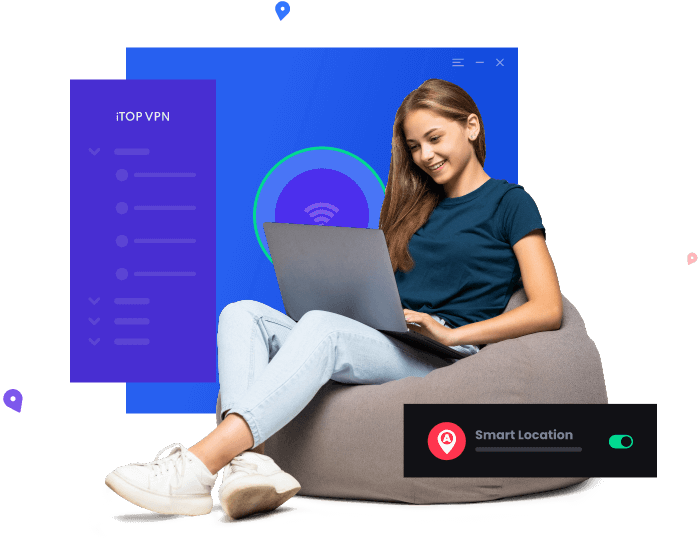While executing software testing, it is very important for the testers to ensure the app’s compatibility across multiple web browsers and devices. Although Internet Explorer is witnessing declining usage, it remains a challenge for the developers to implement proper functioning on this browser. However, with the integration of Internet Explorer online, testers can solve this issue.
With this article, we will understand the advanced compatibility testing approaches for Internet Explorer online. We will also understand how these approaches allow testers to create websites seamlessly across all Internet Explorer and other browsers.
The Current Market of Internet Explorer
Many years ago, Internet Explorer was the dominant web browser as it was the only way of accessing the Internet. However, for quite a while now, it has been on a steady decline in usage. It is still in use, mostly in enterprise environments where legacy apps and systems rely on it.
Therefore, ignoring Internet Explorer compatibility can result in significant user experience issues for a huge segment of end users. Moreover, due to these issues, companies and brands can lose their audience base.
Challenges of Internet Explorer Compatibility Testing
While testing modern websites for Internet Explorer compatibility, the testers will encounter various challenges and obstacles. To shed more light on this segment, we have mentioned some of the most notable challenges below:
- Multiple Versions
Internet Explorer has various versions they are available in the present software market. Each version is significantly different in terms of rendering and JavaScript support. So, it becomes a hectic and challenging process for the developers to test their web apps across all versions.
- Non-Standard Behavior
Internet Explorer has historically implemented certain CSS and JavaScript features in a different format. This format often does not align with the standard web development features or practices that are followed in the present industry. Therefore, it becomes challenging for the developers to adjust the software testing parameters accordingly.
- Lack of Developer Tools
Unlike Mozilla Firefox or Google Chrome, Internet Explorer’s older versions do not have modern developer tools. Therefore, the developers will find it challenging to implement proper debugging steps to find critical errors within the app infrastructure.
Basic Compatibility Testing
Before diving into the advanced approaches of implementing compatibility testing on Internet Explorer online, let us go through some of the basic browser compatibility steps that the developers can implement to sort out the initial issues:
- Manual Testing
The testers can manually launch the website in different versions of Internet Explorer to execute the test cases. During this process, they have to identify visual and functioning issues that might be present in the app development process. However, we would like to warn the developers that manual testing is not only a time consuming process, but it is also prone to errors due to human involvement.
- Virtual Machines
Using virtual machines, the testers can use multiple simulators and emulators to replicate various versions of Internet Explorer. With this option, the testers do not have to install every version of Internet Explorer on their physical devices. However, it is worth remembering that virtual machines cannot replicate the physical parameters of a device and will return flaky test results in these instances.
- Online Services
There are various platforms easily available in the market that provide cloud-based testing environments where the testers can test their website on various browsers and platforms. These browser options also include various versions of Internet Explorer for executing comprehensive test cases.
Advanced Compatibility Testing Techniques
To resolve the challenges of Internet Explorer compatibility in a more comprehensive manner, the application testers have to implement advanced testing approaches as and when required. To further elevate the knowledge of modern testers in this segment, we have mentioned some of the most important techniques below:
- Automated Regression Testing
Automation testing is one of the most important components for efficiently testing the browser’s compatibility across multiple versions of Internet Explorer. For this purpose, the testers can utilize multiple automation testing frameworks like Selenium or Puppeteer. The testers can begin this process by creating the test scripts which will navigate through the website and interact with the elements for verifying their functionality.
While the testers are working on Internet Explorer, they must ensure that the automation test scripts are compatible with all the unique features and rendering patterns, including different JavaScript behaviors in this browser.
To further elevate this process, the app developers can integrate AI-powered test orchestrations and execution platforms like LambdaTest, which can run all the automated test suites on more than 300 using different combinations of browser versions, operating systems, and real devices. While this platform, the app developers can intelligently orchestrate the test cases with artificial intelligence and machine learning.
LambdaTest also simplifies the test reporting and debugging process using active test logging and comprehensive test reports, which consist of various screenshots and videos.
- Polyfills and Transpilation
Using Polyfills, the testers can fill the gaps in browser support by adding missing features. For Internet Explorer, the developer should consider using Polyfills for CSS Grid, Flexbox, and other modern CSS features. The testers can also use JavaScript transpilers like Babel which can convert the ES6+ code into ES5.
This conversion process will ensure compatibility with all the older browsers and browser versions, including Internet Explorer. During this process, the app testers must also remember to convert the application source code content into the supported versions.
- Continuous CSS and JavaScript
The developers and testers can use conditional statements for searching different CSS and JavaScript files. These statements will be adjusted based on the browser. For example, while using Internet Explorer, the developers can provide fallbacks or alternative styles and scripts that will accommodate the limitations of this browser.
To adjust all these parameters, the application testers must enter a set of codes in the terminal window during the test execution process. We have mentioned a sample code that the new testers can use as a point of reference.
- CSS Hacks and Workarounds
Although CSS hacks aren’t recommended as a primary solution for ensuring compatibility with Internet Explorer, sometimes CSS hacks are necessary to fix certain layout issues that might be present in Internet Explorer. In such instances, the developers can use conditional CSS statements or CSS hacks sparingly.
By sparingly using the CSS statements, the testers can ensure that the code doesn’t become harder to maintain in the long run. The testers must reuse huge segments of the existing code while rolling out subsequent updates to the website or web application.
- Modernizr
Modernizr is basically a JavaScript library that detects browser features. Using this library, the testers can adopt the test code accordingly based on the browser or the rendering environment. The testers can also use it to check for support of special features in Internet Explorer.
Depending on the incompatible features the testers might encounter during this process, they can apply appropriate fallbacks or Polyfills to resolve it before the app is forwarded to the deployment phase.
Using the following command, the application developers can initiate this process.
- User-Agent Testing
Although it is not a fullproof process, the testers can use the user agent strings for detecting whether the user is using Internet Explorer or applying specific fixes or workarounds. Once this process is initiated, the system will automatically run the test instances and look for workarounds for fixing incompatible issues or non-rendering features on Internet Explorer.
To begin this process, the tester simply has to enter the following command in the terminal window.
- Continuous Integration Testing
It is important for the testers to integrate compatibility testing into their continuous integration and continuous deployment pipeline. This approach will ensure that any changes do not break the compatibility of the web app on Internet Explorer. For this process, the testers can use dedicated tools like Jenkins or TravisCI.
These tools also allow automate this process across different browser environments so that the system can run the test instances as per the requirements. The integration of this pipeline also ensures that the app testers can initiate and execute the developing and testing phases simultaneously to massively reduce the development cycle and quickly deliver the finished product.
Finally, it also allows the developers and testers to detect crucial errors in the app and resolve them at the earlier phase before they can turn into serious concerns and affect the app’s functioning.
Best Practices for Compatibility Testing on Internet Explorer Online
The following practices will ensure that the developers and testers can utilize the full potential of their compatibility test cases on Internet Explorer:
- It is important for the developers to streamline the testing process before initiating it. For instance, the testers can find out the most popular versions of Internet Explorer within the target audience and adjust the testing parameters accordingly.
- The app testers must download all the required testing files and dependencies from official websites to avoid any malicious attacks or possibilities of data leaks.
- It is important to maintain the proper balance between manual testing and automation testing to ensure dependable and non-flaky test results. For instance, the testers must automate those test instances that are repetitive and do not require any change of data inputs.
- It is important to maintain a thorough documentation of all the app changes, test results, and implemented resolutions. This approach will not only streamline the app delivery process but also ensure that the app testers can avoid previously documented errors in future app iterations.
- While implementing automation testing, developers and testers must go through the official documentation of their chosen automation testing framework. This documentation will consist of various features and methods that might be relevant depending on the app development project.
The Conclusion
Although Internet Explorer might become obsolete in the coming years, its compatibility challenges will persist for modern testers. So, by deploying advanced compatibility testing techniques that we discussed in this article, the testers can ensure that the website functions properly across all versions of Internet Explorer that are currently operational.
Ignoring Internet Explorer compatibility can lead to poor user experiences and can also alienate a massive segment of the audience. This trend will be even more relevant in enterprise settings where Internet Explorer is a hugely important component. So, by embracing these advanced techniques, the developers can maintain compatibility while still being able to use the advanced web technologies.
Finally, it is worth remembering that ensuring browser compatibility isn’t only about supporting legacy systems but also delivering a seamless experience to all users regardless of their browser choice.














Leave a Reply